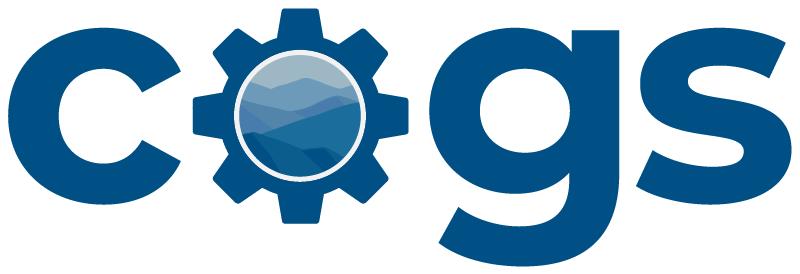How to Automate Sending Out Newsletters to Customers
Why Automating Sending Out Newsletters to Customers Is Important
Automatically sending your newsletters out to customers allows businesses to consistently engage and nurture their customer base without spending excessive time and effort. By automating this process, you can ensure that your customers receive relevant updates, promotional offers, and valuable content regularly, fostering loyalty and driving sales. Automation also offers the advantage of targeting specific customer segments with personalized messages, improving customer satisfaction and maximizing the effectiveness of your marketing efforts.
Automatically sending out newsletters to customers is a concept that simplifies the task of reaching and communicating with your audience. Instead of manually crafting and sending individual newsletters, automation allows you to set up a system that automatically sends newsletters to your subscribers based on predefined triggers or schedules. This eliminates the need for manual intervention, saving you time and reducing the risk of errors or delays in communication.
Bottlenecks You Can Avoid Using Newsletter Automation
1. Inconsistent Communication: Small businesses often struggle to maintain consistent communication with their customers due to limited resources and time constraints. By automating the process of sending out newsletters, businesses can ensure a regular flow of information and updates without manual intervention, improving brand recognition and customer engagement.
2. Personalization Challenges: Personalized newsletters can significantly impact customer engagement and conversion rates. However, manually personalizing each newsletter can be time-consuming and tedious. Automation tools can help small businesses overcome this bottleneck by automatically segmenting their customer base and delivering personalized newsletters based on customer preferences and behavior.
3. Scalability Issues: As businesses grow, managing and sending newsletters individually becomes increasingly impractical. Automating the process allows businesses to scale their communication efforts effortlessly, accommodating a growing subscriber base and delivering consistent messaging to all customers without overwhelming resources.
Software Tools for Automating Newsletter Delivery
1. Mailchimp - Mailchimp is a popular email marketing platform that offers automated newsletter delivery. With its user-friendly interface, customizable templates, and robust automation features, Mailchimp allows businesses to effortlessly automate their newsletter campaigns. From scheduling newsletters to tracking engagement metrics, Mailchimp simplifies the entire process.
2. Klaviyo - Klaviyo is an email marketing automation platform designed specifically for ecommerce businesses. It provides advanced segmentation capabilities, real-time tracking, and personalized email workflows to help businesses automate their newsletter delivery. Klaviyo also integrates seamlessly with popular ecommerce platforms like Shopify and WooCommerce.
3. ActiveCampaign - ActiveCampaign is a comprehensive marketing automation tool that includes automated newsletter delivery. It offers features such as visual automation builders, CRM integrations, and personalized content to empower businesses in their email marketing efforts. ActiveCampaign's automation capabilities streamline the process of sending newsletters and nurturing customer relationships.
4. ConvertKit - ConvertKit is an email marketing platform built for creators and small businesses. It provides customizable templates, marketing automation features, and audience segmentation options to automate newsletter delivery. ConvertKit also offers tools for creating landing pages and forms, making it a versatile option for businesses looking to automate their marketing efforts.
5. HubSpot - HubSpot is a robust marketing automation platform that includes newsletter automation capabilities. With HubSpot, businesses can easily set up automated workflows, segment contacts, and personalize newsletters for better engagement. The platform also offers additional features like lead scoring, CRM integration, and analytics to support comprehensive marketing automation strategies.
These software tools cater to various budgetary needs and business requirements, with Mailchimp being more cost-effective for smaller businesses, while HubSpot offers a more comprehensive and enterprise-level solution.
Using Mailchimp to Automatically Send Out Newsletters
Sign up and create an account
Go to the Mailchimp website and sign up for a free account. Follow the prompts to provide the necessary information and verify your email address.
Set up your audience
Once you're logged in, navigate to the Audience tab and create a new audience. This is where you'll manage your subscriber list. You can import contacts or add them manually. Make sure to segment your audience based on relevant criteria, such as interests or purchase history, to ensure targeted communication.
Design your newsletter template
Under the Templates tab, you can choose from a variety of pre-designed templates or create your own from scratch. Customize the layout, colors, and branding to align with your business. Remember to make it visually appealing and mobile-friendly for optimal user experience.
Set up an automated email workflow
Go to the Campaigns tab and click on Create Campaign. Select "Email" and choose "Automated." From here, you can select a pre-built workflow or create a custom one. For example, you can create a welcome series for new subscribers or a drip campaign to nurture leads. Set triggers and conditions for when emails should be sent.
Customize the email content
Within the workflow, you can add and customize the content of your emails. Personalize them with merge tags to include subscribers' names or other relevant information. Craft compelling subject lines and engaging email content that provides value to your subscribers. Don’t have time to curate the content? This may help!
Test your workflow
Before activating your automated email workflow, send test emails to yourself or colleagues to ensure everything looks and functions as intended. Make any necessary adjustments to the email content or settings based on feedback.
Activate and monitor the workflow
Once satisfied, activate the automated email workflow. From this point on, Mailchimp will automatically send out newsletters to your customers based on the triggers and conditions you've set. Monitor the performance of your emails through the Campaigns tab, reviewing open rates, click-through rates, and other relevant metrics.
Refine and optimize
Regularly analyze the performance of your newsletter campaigns using Mailchimp's reporting features. Identify areas for improvement and optimize your emails to increase engagement and conversion rates. Experiment with different subject lines, content, or sending times to see what resonates best with your audience.
Remember to comply with email marketing best practices, such as obtaining proper consent and providing clear unsubscribe options.
By following this step-by-step process, you can effectively use Mailchimp for automatically sending out newsletters to your customers, saving time and effort while keeping your audience engaged with relevant and targeted content.

